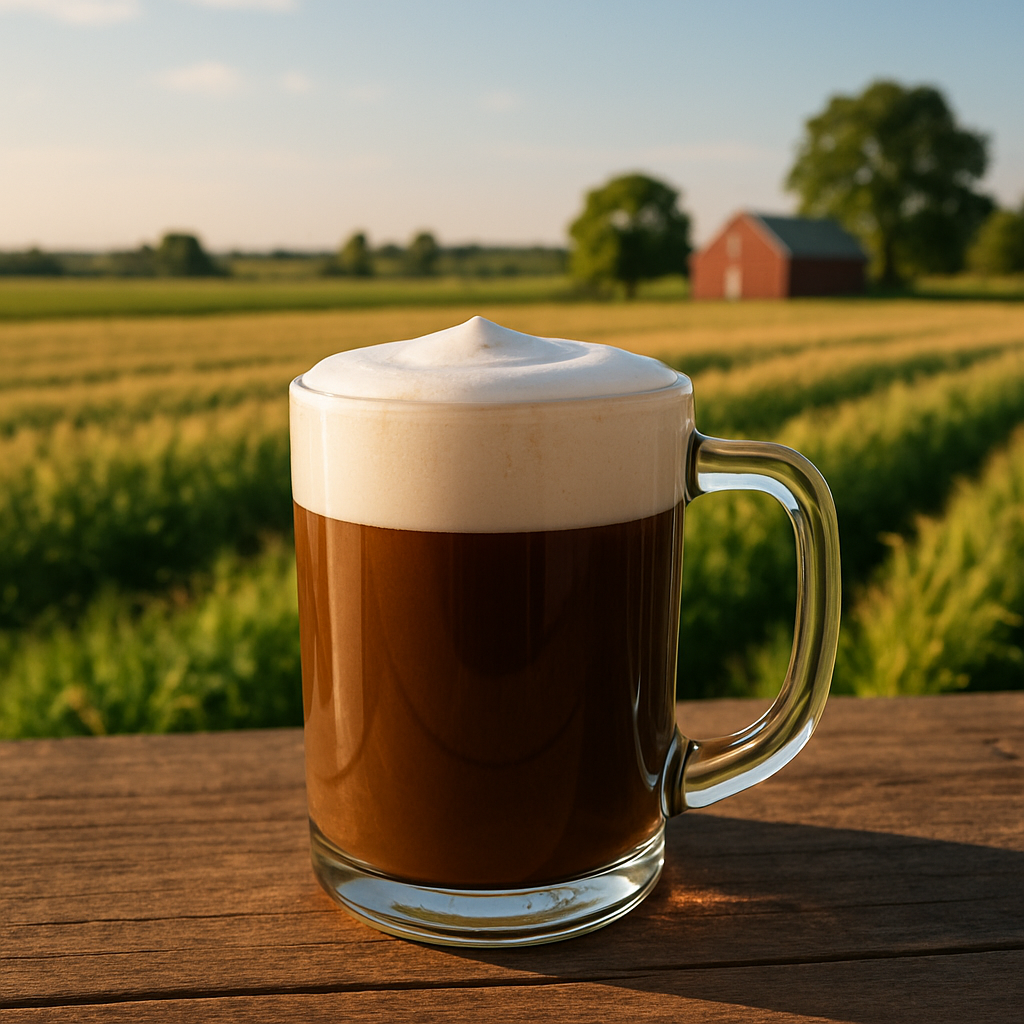
How to Make Cold Foam at Home (Barista Style Guide)
Cold foam has become a café favorite, transforming plain iced coffee into a creamy, elevated drink. But you don’t need to make a Starbucks run to enjoy it. With the right ingredients and method, you can create cold foam at home in under a minute.
This guide breaks down the science, technique, variations, and best coffee pairings to help you get that luscious top layer, every time.
What Is Cold Foam?
Cold foam is frothed milk, usually non-fat or plant-based, that’s whipped into a silky, pourable topping for iced coffee and cold brew. Unlike hot milk froth, cold foam holds its structure without heat, floating gently atop your drink.
It adds creamy texture, a slightly sweet finish, and a barista-level experience to your daily brew. Perfect for those who want a café feel at home (Gambacorta et al., 2020).
Best Milk for Cold Foam (With Comparison Table)
| Milk Type | Froth Quality | Flavor Notes | Texture | Ideal For |
|---|---|---|---|---|
| Skim Milk | Excellent | Neutral | Light, stable | Classic cold foam |
| 2% Milk | Very Good | Slightly creamy | Smooth | Balanced texture + flavor |
| Whole Milk | Moderate | Rich, creamy | Soft | Thick foam, quick deflation |
| Oat Milk (Barista) | Very Good | Slightly sweet | Smooth | Vegan-friendly option |
| Almond Milk | Moderate | Nutty | Airy | Best with added stabilizers |
| Heavy Cream | Rich, thick | Buttery | Dense | Dessert-style cold foams |
How to Make Cold Foam at Home
You’ll need:
- 1/4 cup of chilled milk (see table above)
- Sweetener (optional): 1 tsp of simple syrup or flavored syrup
- A frothing tool: handheld frother, electric frother, French press, or a mason jar
Steps:
- Pour your cold milk into a jar or frother. Add sweetener if using.
- Froth vigorously for 20–45 seconds, until milk has doubled in volume and forms soft peaks.
- Spoon over iced coffee or cold brew.
- Enjoy immediately, cold foam begins to deflate after 30–40 minutes (Park, 2018).
Pro Tips for Perfect Foam
- Use cold milk straight from the fridge for better structure.
- Non-fat and barista-blend plant milks perform best.
- Add flavored syrups (like vanilla or caramel) for a custom café touch.
- For ultra-creamy foam, try mixing half milk + half heavy cream (sweet cream style).
Flavor Variations to Try
- Vanilla Cold Foam: 1 tsp vanilla syrup + 1/4 cup skim milk
- Caramel Cold Foam: 1 tsp caramel sauce + pinch of sea salt
- Coconut Cold Foam: Use canned coconut milk (shake well) + honey
- Matcha Cold Foam: Add 1/4 tsp matcha powder before frothing
Overclock Pairings: Coffees That Deserve Cold Foam
Some Overclock blends pair beautifully with cold foam. Here are our top recommendations:
| Coffee Blend | Flavor Profile | Cold Foam Match |
| French Toast Capacitor | Maple, cinnamon, vanilla | Vanilla or sweet cream |
| Jack’s Cursed Coco-Rum | Coconut, rum | Coconut or vanilla |
| Zombie Espresso Antidote | Bold, nutty, earthy | Caramel or sweet cream |
| The Cinna-Bun Games | Cinnamon, icing | Cinnamon-vanilla cold foam |
Cold Foam vs Whipped Cream vs Steamed Milk
| Feature | Cold Foam | Whipped Cream | Steamed Milk |
| Temperature | Cold | Cold | Hot |
| Texture | Light, airy | Thick, dense | Creamy, velvety |
| Uses | Iced coffee, cold brew | Dessert drinks | Hot coffee, lattes |
| Calories | Lower (if skim used) | High | Moderate |
Final Thoughts
Cold foam transforms your iced coffee from ordinary to café-worthy in under a minute. Whether you're topping our French Toast Capacitor or experimenting with coconut twists on Jack’s Cursed Coco-Rum, the result is always next-level.
It’s creamy. It’s customizable. And it’s easier than you think.
Ready to elevate your morning routine? Explore our lineup of cold-foam-ready Overclock blends and bring barista magic home.
References
Gambacorta, G., Gagliardi, F., & Di Monaco, R. (2020). Consumer Perception and Acceptability of Frothed Milk-Based Beverages. Food Research International, 132, 109060. https://doi.org/10.1016/j.foodres.2020.109060
Park, K. (2018). Sensory Characteristics and Consumer Preference of Milk Foams. Journal of Dairy Science and Biotechnology, 36(1), 20–27. https://doi.org/10.22424/jdsb.2018.36.1.20
